When I drive back to Illinois I do a lot of the driving at night. I’d already made the cross country trip in the 57 once with no issues, and about 5 years ago took it back to the Midwest to visit family again. It’s definitely a WHOO S#** moment when the headlights go out at 80 MPH on a dark interstate at 3AM. About 5 minutes later the headlights came back on then went out again about 20 minutes later and came back on in about another 5 minutes. I finally narrowed the problem down to the circuit breaker in the headlight switch cycling on and off.
The 57-58 Mopar guys are probably already aware Chrysler didn’t use a fuse box/fuses when they built the cars! Power for the accessories and lights go thru 2 internal circuit breakers inside the headlight switch. Which is why there are all the terminals on the back of the headlight switch. When I built the 57 Plymouth I did a custom wiring harness and added a fuse box (including a circuit breaker for the lights)but retained the original switch.
 LS1
LS1 by
M Patterson, on Flickr
I was carrying a spare switch with me and installed that to get me thru the rest of my trip, but after the experience with the original switch I had a feeling it might be a time bomb too. I had no idea why the circuit breaker was cycling; whether it was bad contacts in the switch creating resistance or the breaker just getting weak. So yesterday I decided to pull the switch and see if there was some way to bypass the circuit breakers.
I had to un-crimp the housing to get that off.
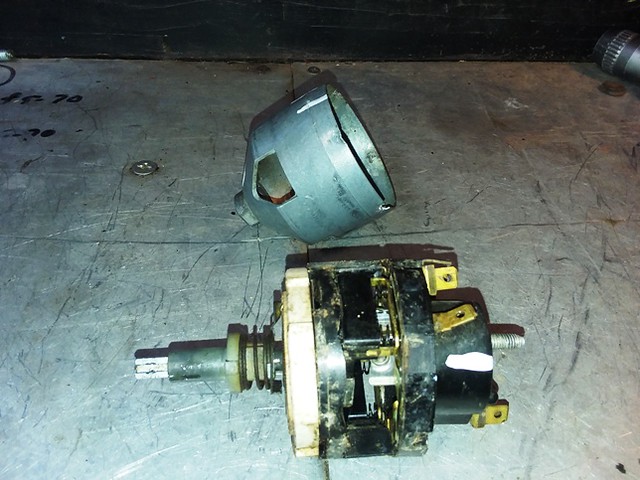 LS2
LS2 by
M Patterson, on Flickr
Then split the switch to get to the contacts and circuit breakers.
 LS3
LS3 by
M Patterson, on Flickr
All the contacts were dirty and I did find where there had been a bit of arcing on the headlight contacts. The way the switch is built makes it pretty difficult to get to the circuit breakers which sit down in a well in the housing. There are actually 2 circuit breakers one dedicated to the headlights and the other for the rest of the lights and accessories.
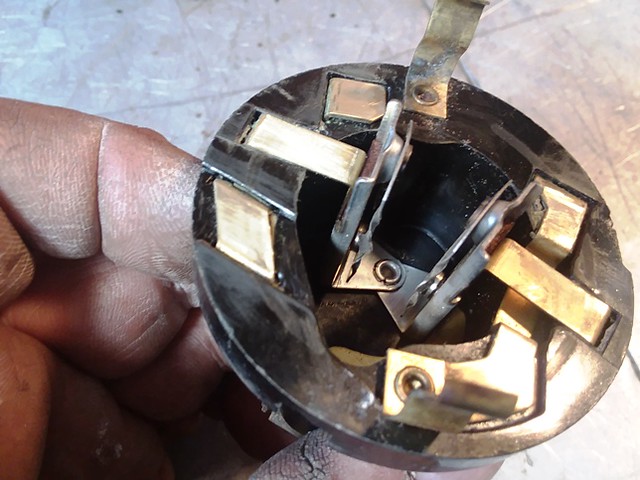 LS4
LS4 by
M Patterson, on Flickr
The brass contact the switch slides over is isolated from the power side with a piece of Bakelite so the power has to go thru the contact set at the bottom of the switch.
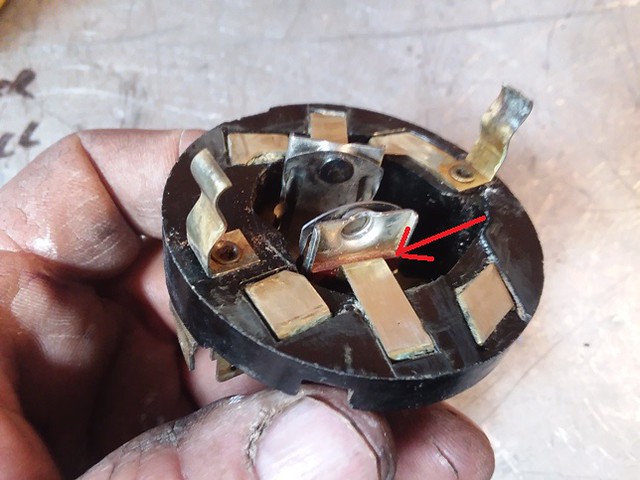 LS5
LS5 by
M Patterson, on Flickr
I finally decided the best way to bypass the circuit breaker was to just fill the gap between the contact and power side of the switch with solder.
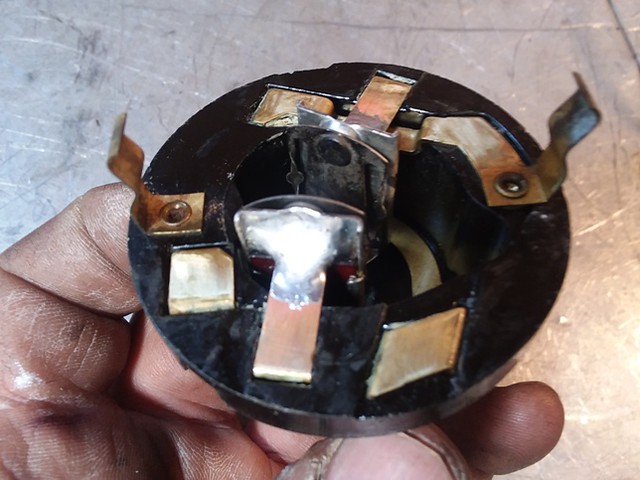 LS6
LS6 by
M Patterson, on Flickr
Anyway the switch is reassembled and back in the car and I’m a lot more comfortable about driving it at night.
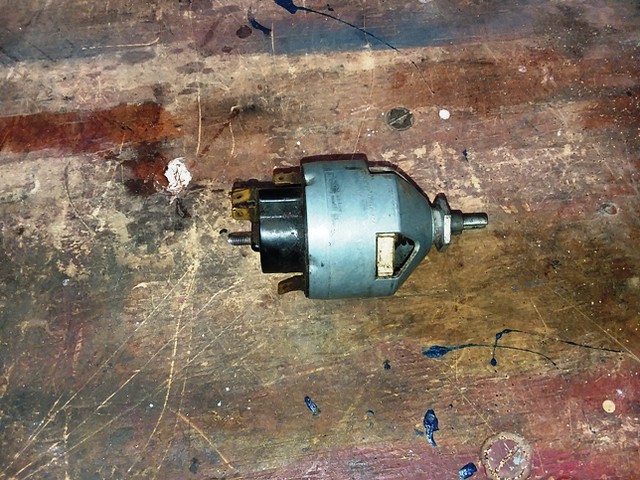 LS7
LS7 by
M Patterson, on Flickr

